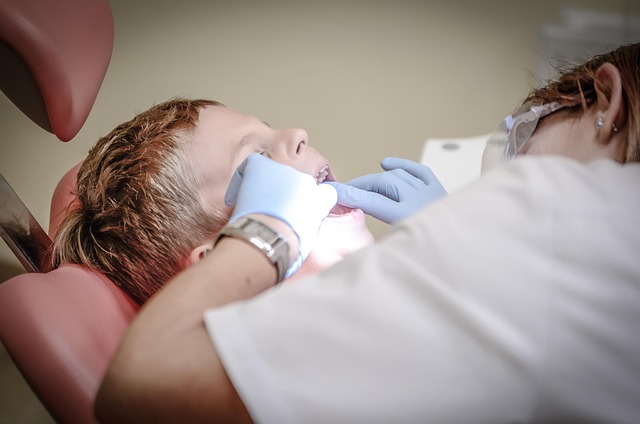General liability insurance for medical practices is a vital safety net against risks and legal liabilities, covering medical malpractice, property damage, and patient injuries. Risk assessments are crucial to identify hazards like slip-and-fall incidents or breaches of infection control protocols. Healthcare providers must tailor policies to these risks, maintain meticulous records, train staff, adhere to standards, and review insurance regularly for effective general liability management. Comprehensive coverage protects against patient harm, medical errors, and cyberattacks, fostering trust with clients and ensuring long-term success.
In the dynamic landscape of healthcare, safeguarding your medical practice from potential risks is paramount. This comprehensive guide explores essential strategies to protect your business and patients. From understanding the fundamentals of general liability insurance to implementing robust risk management techniques, we demystify key aspects crucial for mitigating legal exposure. Discover how to assess and navigate common lawsuits targeting healthcare providers, ensuring your practice’s resilience in an evolving regulatory environment.
- Understanding General Liability Insurance
- Assessing Risks in Medical Practices
- Common Lawsuits Against Healthcare Providers
- Protecting Your Practice with Comprehensive Coverage
- Risk Management Strategies for Medical Professionals
- Case Studies: Real-World Risk Mitigation Examples
Understanding General Liability Insurance

General Liability Insurance is a crucial component in protecting your medical practice from potential risks and legal liabilities. This type of insurance offers financial protection against claims of bodily injury or property damage that may occur on your premises. For medical practices, this coverage is essential due to the unique exposure to various hazards. From slip-and-fall accidents in the waiting room to equipment malfunctions, general liability for medical practices helps cover legal fees and settlement costs if a patient files a lawsuit.
The policy typically covers a wide range of incidents that could impact your practice’s operations and financial stability. It includes provisions for medical malpractice, which is separate but often included in general liability policies. Understanding the scope of this insurance is vital to ensuring your practice is adequately protected. By reviewing the policy carefully, you can identify exclusions and limitations, allowing you to make informed decisions about risk management strategies to complement your general liability coverage.
Assessing Risks in Medical Practices

Assessing risks is a critical step for any medical practice to ensure it’s prepared for potential challenges and liabilities. General liability for medical practices involves identifying and mitigating risks that could lead to patient injuries, legal disputes, or financial losses. This process begins with a thorough review of the facility, equipment, and staff procedures. Practices should evaluate factors such as slip-and-fall hazards, proper use of medical devices, and adherence to infection control protocols.
Regular risk assessments help in implementing preventive measures and creating contingency plans. By documenting these assessments, practices can demonstrate due diligence and proactive management of risks. This is particularly important for general liability coverage, ensuring that insurance policies are tailored to the unique risks associated with the practice.
Common Lawsuits Against Healthcare Providers

Healthcare providers, like any other business, face unique risks and potential liabilities. One of the most common areas of concern is the risk of lawsuits, which can arise from various incidents within a medical practice. General liability for medical practices involves protecting against claims related to patient injuries, property damage, or even slander and libel.
Medical malpractice suits are prevalent, covering allegations of negligence, misdiagnosis, incorrect treatment, and failure to obtain informed consent. To mitigate these risks, healthcare providers should focus on maintaining comprehensive records, ensuring staff training, adhering to industry standards, and implementing robust safety protocols. Regular reviews of insurance policies and staying updated with legal guidelines are essential steps in managing general liability for medical practices effectively.
Protecting Your Practice with Comprehensive Coverage

Protecting your medical practice from common risks is paramount to ensuring its long-term viability and success. One of the cornerstone defenses against potential liabilities is securing comprehensive general liability coverage for medical practices. This type of insurance acts as a safety net, safeguarding your practice against a wide range of claims, from patient injuries sustained during their visit to legal issues arising from medical errors or malpractice.
Comprehensive general liability for medical practices not only covers traditional risks but also extends protection against more nuanced scenarios, such as slip-and-fall accidents on your premises, miscommunication leading to medication errors, and even cyberattacks that compromise sensitive patient data. By investing in robust general liability coverage, you demonstrate a commitment to patient safety and risk management, fostering trust with both current and prospective clients.
Risk Management Strategies for Medical Professionals

Implementing robust risk management strategies is paramount for medical professionals to safeguard their practices and patients from potential risks and liabilities. One of the cornerstone measures is obtaining adequate general liability coverage for medical practices, which protects against claims related to negligence or patient harm. This insurance is essential as it can shield doctors and healthcare providers from significant financial burdens and legal repercussions.
Additionally, staying current with industry regulations and guidelines is crucial. Regular staff training on protocol adherence and safety procedures can mitigate risks associated with medical errors. Effective communication with patients about treatment options, potential side effects, and consent forms reduces the likelihood of malpractice suits. Proactive risk management not only ensures compliance but also fosters a culture of patient safety within the healthcare facility.
Case Studies: Real-World Risk Mitigation Examples

In the realm of medical practices, understanding and mitigating risks is paramount to ensuring a safe and successful operation. Case studies from real-world scenarios offer valuable insights into effective risk management. For instance, consider a general practice that implemented stringent infection control protocols following a case of healthcare-associated infection. By adopting best practices, regular staff training, and advanced sanitization techniques, the clinic significantly reduced patient risks and improved outcomes, setting a standard for other medical facilities to follow in terms of general liability management.
Another compelling example involves a dental practice that faced legal repercussions due to an accidental patient injury. Proactive risk mitigation strategies, such as comprehensive insurance coverage, up-to-date equipment maintenance, and clear patient communication, played a pivotal role in resolving the issue swiftly. This particular case underscores the importance of proactive measures in preventing potential liabilities, demonstrating how medical practices can protect themselves from common risks through strategic planning and adherence to industry standards.
